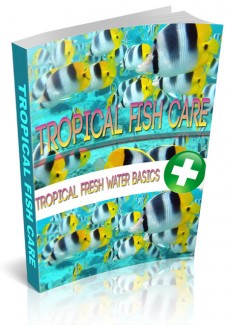
 License Type: Resell Rights
License Type: Resell Rights  File Size: 4,471 KB
File Size: 4,471 KB File Type: ZIP
File Type: ZIP
 SKU: 51306
SKU: 51306  Shipping: Online Download
Shipping: Online Download
Ebook Sample Content Preview:
Chapter36 - Nannostomus Fish Care and Aquariums
How to care for Nannostomus species?
If you are considering tanks and fish, care is sure to learn more about the types of fish on the market. Having an overall ideal as to the type of fish can help you handle fish care and aquariums with less after. Keep in mind that aquariums today are equipped with electronic devices, switches, controls, etc, which enable you to use the components to maintain your aquarium. Still you will need a test kit, and a few other items to keep up your aquarium. In addition, fish are all different, yet some species are similar in comparison. Again knowing the species can help you maintain your aquarium as well, since some fish prefer hard water, soft water, acidy water, alkalinity water, and so on. To help you relate to fish and to work toward maintaining your tank, we can review a few types of fish.
Nannostomus include the Eques, Marginatus, Unifasciatus, Trifasciatus, and the Beckfordi species. Nannostomus Eques originated from the Amazons. The fish are commonly referred to as Nannobrycon Eque, or Poecilobrycon. The Tube Mouth fish as he is commonly named grows at a size of 2 inches. The species are sometimes called the Brown-Tailed Pencilfish, or simply Pencilfish. This fish has a stretched out snout and swims in the tank at an angle. Nannostomus are peaceful fish, which tend to prefer the same water conditions. The water should be set between 78 degrees and 80 degrees Fahrenheit. The male fish tend to be slimmer than the Nannostomus female. In addition, the fish spawn on broadleaf plants. Check out the Ludwigia plants and the Hygrophila.
Nannostomus Marginatus is commonly known as the Dwarf Pencilfish. This fish comes from the western areas of Guiana. The fish is of the smaller breed in that they usually grow one, % inches in size. Still, this stocky breed has some pretty colors that make him appear big. The fish has black stripes, which red colors sprinkle over his fins.
Nannostomus Margin is a peaceful fish, and a bit introverted. Due to his introverted nature and peaceful side, it is best to keep the Marginatus in tanks where smaller fish dwell. The Nannostomus Marginatus feed and expect water conditions in the same way that the Nannostomus Anomalus expect. Nannostomus Marginatus female fish tend to present a lighter color than that of her male counterpart. This fish is ideal for breeding.
Nannostomus Unifasciatus is commonly known as the Tail-eyed Pencilfish. As well, the Nannostomus Unifasciatus is sometimes called the One-Line Pencilfish. This specie comes from the Amazon and Guiana. Nannostomus Unifasciatus grow around 2 inches in size. This specie in particular is one of the most colorful breeds on the market. The fish has a lower lobe, which is brilliantly decorated with colorful spots. The fins enlarge.
Nannostomus Unifasciatus has a friendly nature and is suitable for communal tanks. The fish feed and expect water conditions comparable to the Nannostomus specimens. To date this fish is not a choice of breeding angle, since studies are inconclusive. Yet, if you purchase the fish, you may monitor its behaviors on your own to learn more.
The Nannostomus Beckfordi is popularly known as the Beckford’s Pencilfish, or the Golden Pencilfish. The fish matures at 1 % inches in size and comes from Guiana and the Amazon Basin. This breed is peaceful in nature, which makes him subject to communal tanks. The hardy specie however has a fragile appearance. Still, he can hang his hat in communal waters without a problem.
Chapter37 - Pomacentridae Fish Care and Aquarium
Members of the Pomacentridae family include the Amphiprion Rubrocinctus and the Amphiprion Ocellaris. The Amphiprion Rubrocinctus is better known as the Clown Anemone Fish. The second fish is commonly referred to the Red-Gridled Anemone.
The Clown fish are biologically natured to dine off smaller fish. The Clowns come from the Australian, Japan, and Indo-Pacific waters. Clown fish tend to have rectangle bodies, which its colors are bright orange. The head area is often lighter orange. The fish have black edges, which are offset by white perpendicular bars. The head and eyes is where most of the white bars produce its color. Clown fish grow up to 3 inches in size. The Clown fish in fact was characterized in “Finding Nemo.” Nemo and his father are perfect examples of the Clown Anemone.
Clown fish tend to prefer water temperatures between 77 and 82 degrees Fahrenheit. In addition, the fish prefer a ph balance at eight and no higher than 8.5. The water density should be set at 1.0 23. The fish should be situated in a tank of fish that all enjoy strong lighting; as well, the fish prefers sandy areas. Do not forget to add a surplus of furnishings and substrate to the tank, since this is one of the high maintenance fish. Considering “Finding Nemo” again, since you will see the fish prefer luxury.
The Clown fish has next to zero sexual preferences. The fish’s behavior is remarkably distinguished from other fish. Clown fish seem to closely associate with chemicals and mechanisms of two distinctive organisms. The fish demand a capable dwelling, i.e. you should keep fish of his kind in the same tank and avoid putting sea anemones, including the giant anemones. These fish pose risks to the Clown fish.
Red-Gridled Anemone comes from the Pomacentridae family. This particular specie derived from the Japan, Australian, and Indo-Pacific Oceans. In tanks, the Red-Gridled desires water temperatures between 75 degrees and 86 degrees Fahrenheit. Water density desired by the red-Gridled is around 1.0 20, or 1.0 23. The pH balance should rest at 8.3 and no higher than 8.6. This fish is similar to the Clown fish in that the Red-Girdled fish prefer luxury housing with plenty of furnishing, quality lighting, and so on. Stones are a plus. The Red-Gridled fish have a deep body, which its colors are similar to the Clown fish. The head is pale orange, while the body is brighter orange. The head and eyes differ slightly than that of the Clown fish, in that, the eyes are yellowish, while the head is has perpendicular white bars. To fish grows about 3 inches in size, and does not have sexual preferences.
- File Size:4,471 KB
- License: Resell Rights
- Category:Ebooks
- Tags:2014 Ebooks Resale Rights







